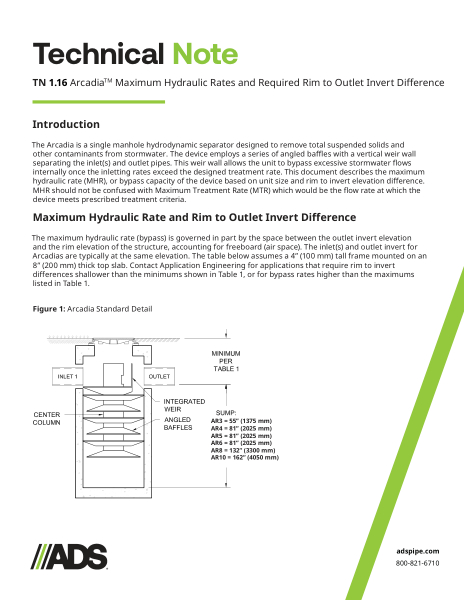TN 1.16 Arcadia Maximum Hydraulic Rates and Required Rim to Outlet Invert Difference
Filename:
TN 1.16 Arcadia Maximum Hydraulic Rates and Required Rim to Outlet Invert Difference.pdf

This technical note is for the Arcadia Maximum Hydraulic Rates and Required Rim to Outlet Invert Difference. Introduction and outlet invert difference discussed.
The Arcadia is a single manhole hydrodynamic separator designed to remove total suspended solids and other contaminants from stormwater. The device employs a series of angled baffles with a vertical weir wall separating the inlet(s) and outlet pipes. This weir wall allows the unit to bypass excessive stormwater flows internally once the inletting rates exceed the designed treatment rate. This document describes the maximum hydraulic rate (MHR), or bypass capacity of the device based on unit size and rim to invert elevation difference. MHR should not be confused with Maximum Treatment Rate (MTR) which would be the flow rate at which the device meets prescribed treatment criteria.
The maximum hydraulic rate (bypass) is governed in part by the space between the outlet invert elevation and the rim elevation of the structure, accounting for freeboard (air space). The inlet(s) and outlet invert for Arcadias are typically at the same elevation. The table below assumes a 4” (100 mm) tall frame mounted on an 8” (200 mm) thick top slab.
An Arcadia standard detail and different sized Arcadia tables showing maximum hydraulic rate and rim to outlet invert differences provided.
